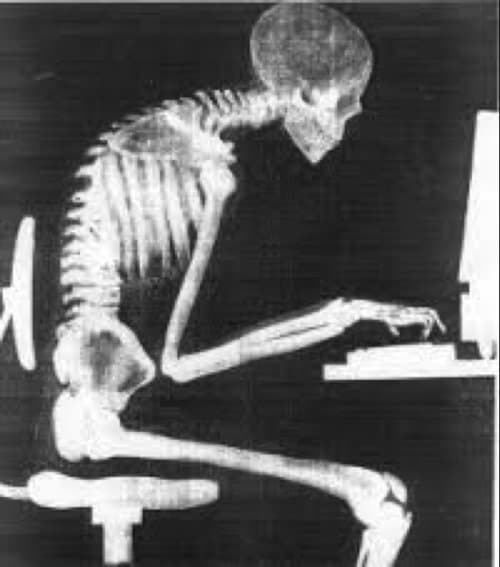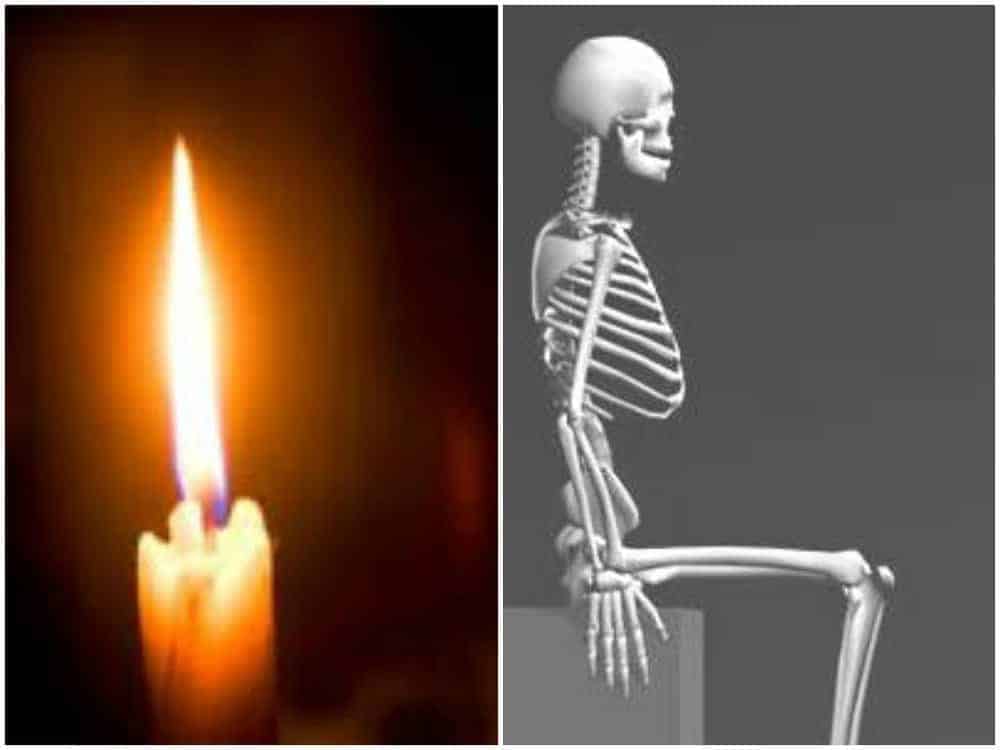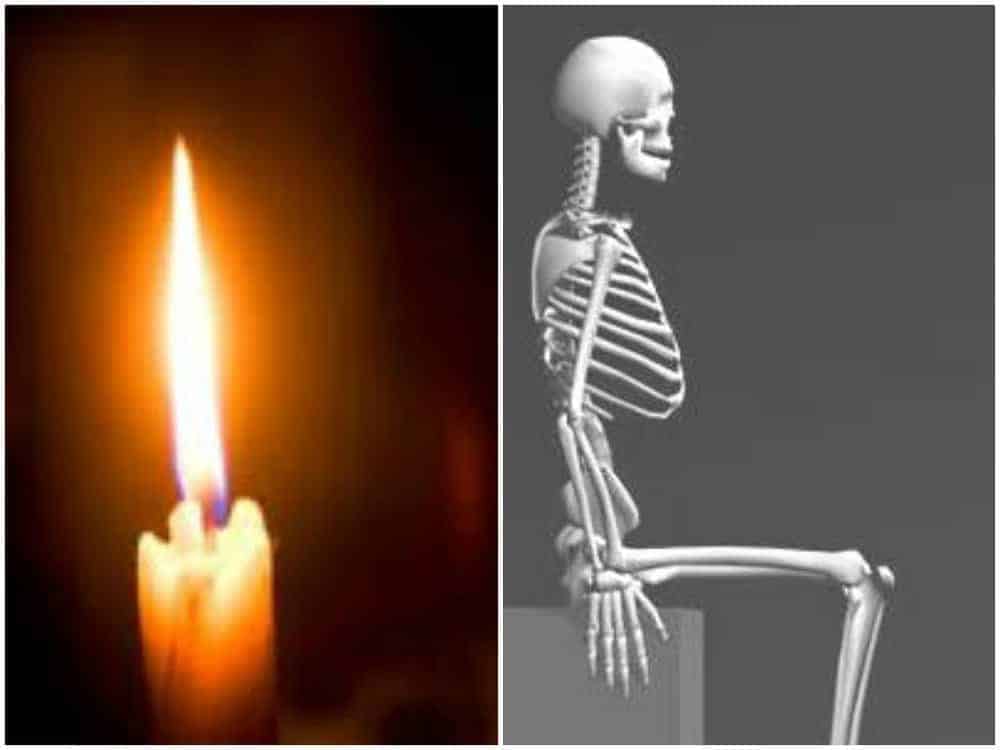by Nicki Miller
How are you reading this?
If you’re sitting on a chair, notice where your hip bones make contact with the chair. Imagine yourself as only a skeleton. No muscle, no organs, just a skeleton. Feel the space between your hip bones, are you clenching it? Imagine that space is filled with light and allow the light to shine out of your body evenly from front to back and side to side of your pelvis. Notice your collar bones and shoulder blades. Create space for light to shine down from your ears, between that space between collarbones and scapulas and let that light create two symmetrical pillars of light- one through each side of your ribcage, pouring into your pelvis and shining out evenly front, back and side to side.
Now feel your head on your neck as a helium balloon pulling your spine up like a flame. Keep that space between collarbones and scapula opening outwards. Feel your feet on the floor, all five toes and heel relaxed under your knees. Feel your thigh bones on the chair resting evenly in each hip socket and surrounded by that light in the pelvis.
How is your posture now compared to when you started reading this paragraph?

There are dozens of approaches to imagery work in movement. Skinner Release Technique, Alexander Technique, Mind Body Centering, Feldenkrais, Axis Syllabus, Laban Movement Analysis… the list goes on. For years now, I keep noticing that these kinds of approaches seem to exist exclusively in the movement arts and not in fitness/gym culture where most people go to move their bodies. Dance, theatre, and circus training often refer to at least one of these somatic systems to complement the rigor of the other physical trainings those disciplines require. In fitness however, which is, let’s face it, a very testosterone fueled field, there seems to be a disproportionate emphasis on effort over economy of effort. People in gyms use language from old school lifting to qualify training in terms of “form” more than “feeling” and “gains” more than “discoveries.” Yes form and gains have their place, no question, but….
You guys.
NOT EVERYTHING HAS TO BE HARD.
In dance and acrobatics there is technique, and technique is sum of BOTH anatomical specificity (form) during movement AND certain “qualities” of movement (feeling).
This is why despite having zero interest in doing sports, I value strength training in my practice. It’s also why a football player with zero interest in Balanchine gets value from doing ballet. I need something more form oriented to support my expression-based theatrical movement work. A football player needs something more feeling oriented to complement the intense effort and impact their body endures on the field.
Effort is an essential part of training, but it isn’t everything.
Let’s try an experiment! Today’s blog is interactive.
Hold a forearm plank right now for 30 seconds. SQUEEZE EVERY MUSCLE YOU HAVE AS HARD AS YOU CAN THE WHOLE TIME.
Now, rest and read the next part:
Take those prompts I wrote at the beginning of this post. Yep, those floofy doofy words about feeling your skeleton organize with light between your bones. Try doing a plank with those cues. But- don’t let your skeleton collapse. You DO have to engage muscles, and it will still be challenging, but keep your focus on feeling an open, organized skeletal structure while you engage muscles. Hold it for 30 seconds.
How’d it go? What was different?
Now, if I asked you to deadlift 400 lbs. and you felt for an open skeleton you’d hurt yourself. But if I asked you to do swinging beats on a trapeze and you gripped every muscle in your body while you did it, you’d also hurt yourself.
This is all to say: different tasks require different energetic movement qualities. Movement quality is best directed through poetic imagery. Eg: Anchor yourself like a tree to the ground to do that deadlift. Be the pendulum of a clock to do that trapeze beat. Sometimes even things like imagining that you are Simone Biles while doing a cartwheel will make that cartwheel WAY more powerful.
Moral of the Story
There’s a reason dancers and martial artists are the most elegant movers: they think like poets when they move. They play with feeling “as if…” when they move.


